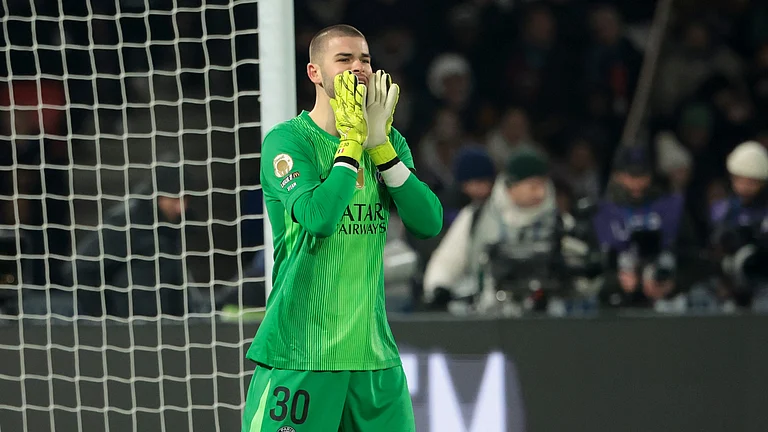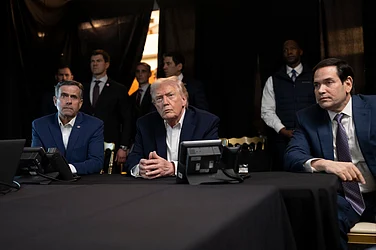Sri Lanka’s Parliament speaker says President Gotabaya Rajapaksa has resigned and Parliament will convene to choose a new leader after massive protests took over government buildings to force him out of office.
Speaker Mahinda Yapa Abeyweardana said Friday that the Parliament will convene Saturday to start the process of electing a new president. He expects to complete the process within seven days.
Their new choice as president will serve the remainder of Rajapaksa’s term, which ends in 2024. That person could potentially appoint a new prime minister, who would then have to be approved by Parliament.
Rajapaksa fled the country Wednesday amid mounting protests for him to resign. He arrived in Singapore on Thursday and the speaker said Rajapaksa’s resignation was effective on that date.
“To be validated like this is massive,” said Viraga Perera, an engineer who has been protesting since April and estimated that he has spent 60 or 70 nights there in all. “On a global scale, we have led a movement that toppled a president with minimal force and violence. It’s a mix of victory and relief.”
Protesters who had occupied government buildings retreated Thursday, restoring a tenuous calm in the capital, Colombo. But with a fractured opposition, a solution to Sri Lanka’s many woes seemed no closer.
Abeywardana said he will ensure the process of electing a new president will be swift and transparent. “I request the honorable and loving citizens of this country to create a peaceful atmosphere in order to implement the proper Parliamentary democratic process and enable all members of Parliament to participate in the meetings and function freely and conscientiously,” he said Friday.
The protesters accuse Rajapaksa and his powerful political family of siphoning money from government coffers for years and his administration of hastening the country’s collapse by mismanaging the economy. The family has denied the corruption allegations, but Rajapaksa acknowledged that some of his policies contributed to the meltdown.
Months of protests reached a frenzied peak over the weekend when demonstrators stormed the president’s home and office and the official residence of Prime Minister Ranil Wickremesinghe. On Wednesday, they seized Wickremesinghe’s office.
Images of protesters inside the buildings — lounging on elegant sofas and beds, posing at officials’ desks and touring the opulent settings — captured the world’s attention.
The demonstrators initially vowed to hold those places until a new government was in place, but the movement shifted tactics Thursday, apparently concerned that any escalation in violence could undermine their message following clashes the previous night outside the Parliament that left dozens injured.
“The fear was that there could be a crack in the trust they held for the struggle,” said Nuzly, a protest leader who goes by only one name. “We’ve shown what power of the people can do, but it doesn’t mean we have to occupy these places.”
Devinda Kodagode, another protest leader, told The Associated Press they planned to vacate official buildings after the speaker said he was exploring legal options for the country in the wake of Rajapaksa’s departure.
Visaka Jayaweer, a performing artist, described the bittersweet moment of closing the gate to the presidential palace after the crowds cleared out.
“Taking over his residence was a great moment. It showed just how much we wanted him to step down. But it is also a great relief” to leave, she said. “We were worried if people would act out — many were angry to see the luxury he had been living in when they were outside, struggling to buy milk for their children.”
The country remains a powder keg, and the military warned Thursday that it had powers to respond in case of chaos — a message some found concerning.
Troops in green uniforms and camouflage vests arrived in armored vehicles to reinforce barricades around the Parliament, while protesters vowed to continue holding rallies outside the president’s office until a new government was in place.
Rajapaksa and his wife fled Sri Lanka early Wednesday for the Maldives, slipping away in the night aboard a military plane. On Thursday, he went to Singapore, according to the city-state’s Foreign Ministry. It said he had not requested asylum.
Since Sri Lankan presidents are protected from arrest while in power, it’s likely Rajapaksa wanted to plan his departure while he still had constitutional immunity and access to the plane.
The protests underscored the dramatic fall of the Rajapaksa political clan that has ruled Sri Lanka for most of the past two decades.
A military strategist whose brutal campaign helped end the country’s 26-year civil war, Gotabaya Rajapaksa and his brother, who was president at the time, were hailed by the island’s Buddhist Sinhalese majority. Despite accusations of wartime atrocities, including ordering military attacks on ethnic Tamil civilians and abducting journalists, Rajapaksa remained popular among many Sri Lankans. He has continually denied the allegations.
The shortages of basic necessities have sown despair among Sri Lanka’s 22 million people. The country’s rapid decline was all the more shocking because, before the recent crisis, the economy had been expanding, with a growing, comfortable middle class.
It was not immediately clear if Singapore would be Rajapaksa’s final destination, but he has previously sought medical care there, including undergoing heart surgery.





















